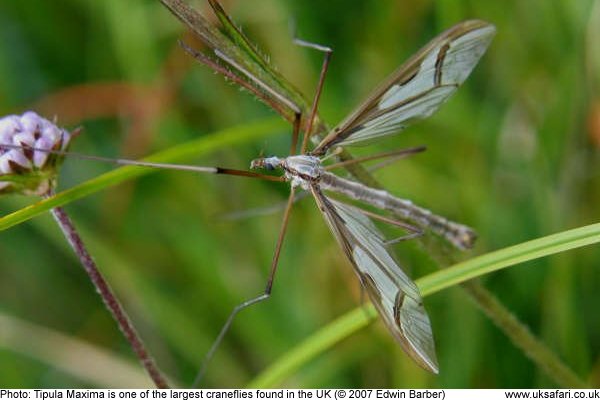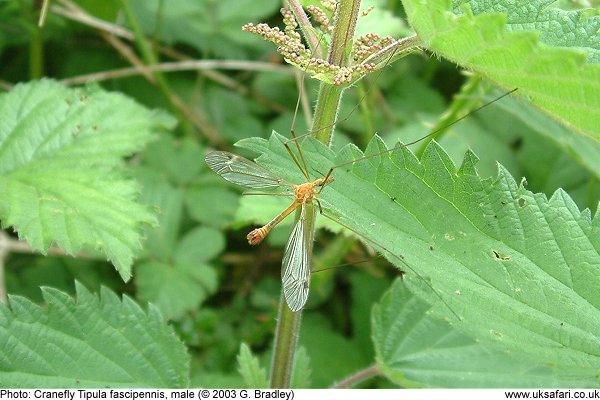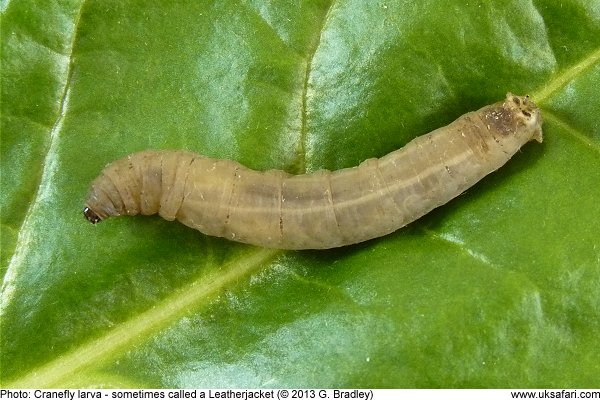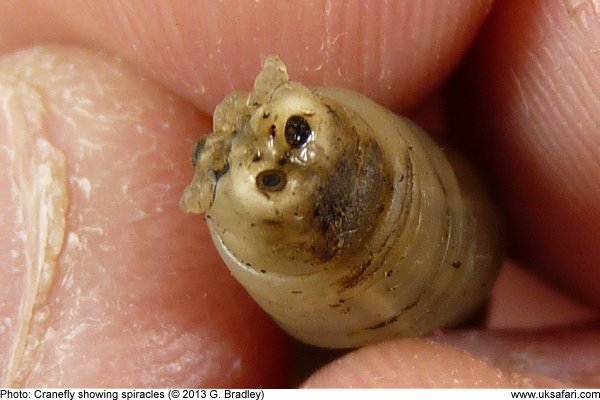 Quick Facts
Quick Facts
Scientific name: Tipulidae
Size: Wingspan 20mm to 65mm
Distribution: Found throughout the U.K.
Months seen: June to October. Numbers of Craneflies peak in September and there is frequently an abundance of them after a wet summer. Wet soil is probably easier for larvae to move through as they feed
Habitat: Found on garden lawns and fields with short grass
Food: Nectar. Crane fly larvae feed on the roots of grasses
Special features: Sometimes called 'daddy long-legs', there are around 300 different species of crane fly in the UK. The name 'Daddy Long-legs' can lead to confusion as there is a species of spider known as daddy long-legs, and also harvestmen are often referred to as daddy long legs.
Adult crane flies have a long thin body, and very long, thin, gangly legs. The legs are also very fragile, and break off easily. This may be an escape mechanism to evade capture from birds.
Female Crane flies have larger abdomens in comparison to the males. The female abdomen ends in a pointed ovipositor which looks a bit like a stinger. Crane flies are harmless and the pointed tip is purely used for egg-laying. In September you can see the females bobbing up and down in grassland as they lay their eggs.
Crane flies have one pair of wings which are used for lift, and a pair of "halteres" which look like a pair of tiny baseball bats just behind the wings. They work like gyroscopes, helping the fly to keep its balance in the air.
The larvae, which live just below the surface of the soil, are commonly known as 'leatherjackets' on account of their relatively thick skin. They feed on the roots of grasses. If you find one it can be quite easy to confuse the head end from the tail end. The tail end has two circular indentations which look like eyes. A pair of eyes would be practically useless to Crane Fly larvae since they live in darkness underground. These two dents are actually breathing holes, which in insects are called 'spiracles'
 Related Pages
Related Pages
- Spotted Crane flies
- UK Safari Invertebrates Section
- UK Safari Flies Section
- Identify other wildlife
- Free Newsletter

 Popular Pages
Popular Pages
Amphibians, Bats, Badgers, Beetles, Birds, Birds of Prey, Bumble Bees, Butterflies, Caterpillars, Creepy-Crawlies, Deadly Spiders, Dolphins, Dragonflies, E-Postcards, False Widow Spiders, Free Newsletter, Frogs, Fungi, Garden Spiders, Glow-Worms, Grey Squirrels, Hedgehogs, House Spiders, Ladybirds, Mammals, Marine Mammals, Moths, Owls, Reptiles, Spiders, Toads, Trees, Wildlife Hospitals
Copyright © 2020 G. Bradley UK Safari. All rights reserved | About Us | Links | Contributors


 Crane Flies
Crane Flies





